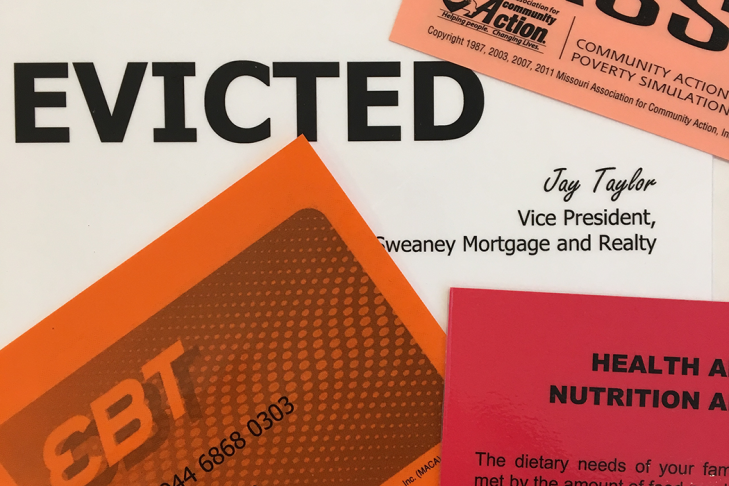When I was invited to CJP’s Poverty Simulation experience for staff, I was skeptical, but also intrigued. The marketing (which—full disclosure—I helped to edit) promised that by the end of two hours, I’d have a deeper understanding of what it feels like to struggle through a month in poverty. Hmm.
Been there, done that… kind of
Admittedly, I’ve never truly lived in poverty. But I do know a little something about being broke. Before starting my job as a writer at CJP 10 years ago, I was temporarily jobless with a mortgage to pay and two young kids depending on me. I know what it feels like to slide into a pit of debt, how long it takes to claw my way back out, and I’ve ridden the paycheck-to-paycheck roller coaster. Even if you’ve only experienced that terrible, stomach-roiling anxiety once, you never forget it.
How would two hours in a conference room with my colleagues replicate that feeling? I was about to find out.
Changing my identity
At the start of the Simulation, each participant was assigned a role as a member of a family and given a few moments to review our shared story and the assets we had to work with. I became Charles Chen, a married father of three whose unemployment benefits were running out. My wife had a minimum wage job that provided health insurance for her, but we couldn’t afford the family plan. With my teenage daughter due to give birth in two months, my wife and I agreed on the priorities for our first “week” of the Simulation: a temporary job for me, and some kind of health care coverage for all of us.
Ready, set, fail
Related
I went back to my family with a little cash from hocking our camera, but otherwise with very little to show for my efforts. My wife returned with a paycheck that needed to be cashed, and an overdue notice from our mortgage company. One child needed $50 for new glasses. None of us had gotten groceries or paid a bill.
And so it went for the next three weeks. Scrambling between agencies, scraping cash together, trying not to forget the kids amid the tumult. At the end of each week, we frantically tried to plan a new strategy, dodging the curveballs coming at us from every direction.
“But wait,” I thought. “This isn’t fair!”
“They” didn’t tell us all the rules before we started or give us time to figure out where everything was. Some people gave us bad information, and the lady at the mortgage company was downright rude. I felt badly for my wife who was contributing a paycheck and trying to manage the bills, the kids… everything that I was letting fall through the cracks. I had to admit, it was like real life, compressed into a few hours.
When it was over, the organizers asked if any of our families in a stronger position after the Simulation than before we started. Some of us had managed to stay afloat, but an alarming number of my colleagues had been forced out of their homes and into a shelter.
And then I got it.
Poverty is not fair. It’s sort of like quicksand; no matter how hard you struggle, you’re unlikely to get out on your own. You may not even be able to reach a helping hand—you need someone to give you their hand and guide you.
People who fall into poverty through job loss or health issues are often embarrassed, unfamiliar with the social services system, and unsure where to go for help. People who are born into poverty are swimming against a riptide, buffeted by constant chaos. The very system intended to help vulnerable people is often a source of frustration, one that’s plagued by misinformation and inefficiency.
Phone a friend
I’m glad CJP is working to change that. The CJP Warmline provides easy access to community-wide support with one phone call or email inquiry. They help people navigate available services and they provide customized support and guidance each step of the way. If you or someone you know needs help, call them. You don’t have to be embarrassed, because they don’t judge: they problem solve. The sooner you call, the more they can help.





